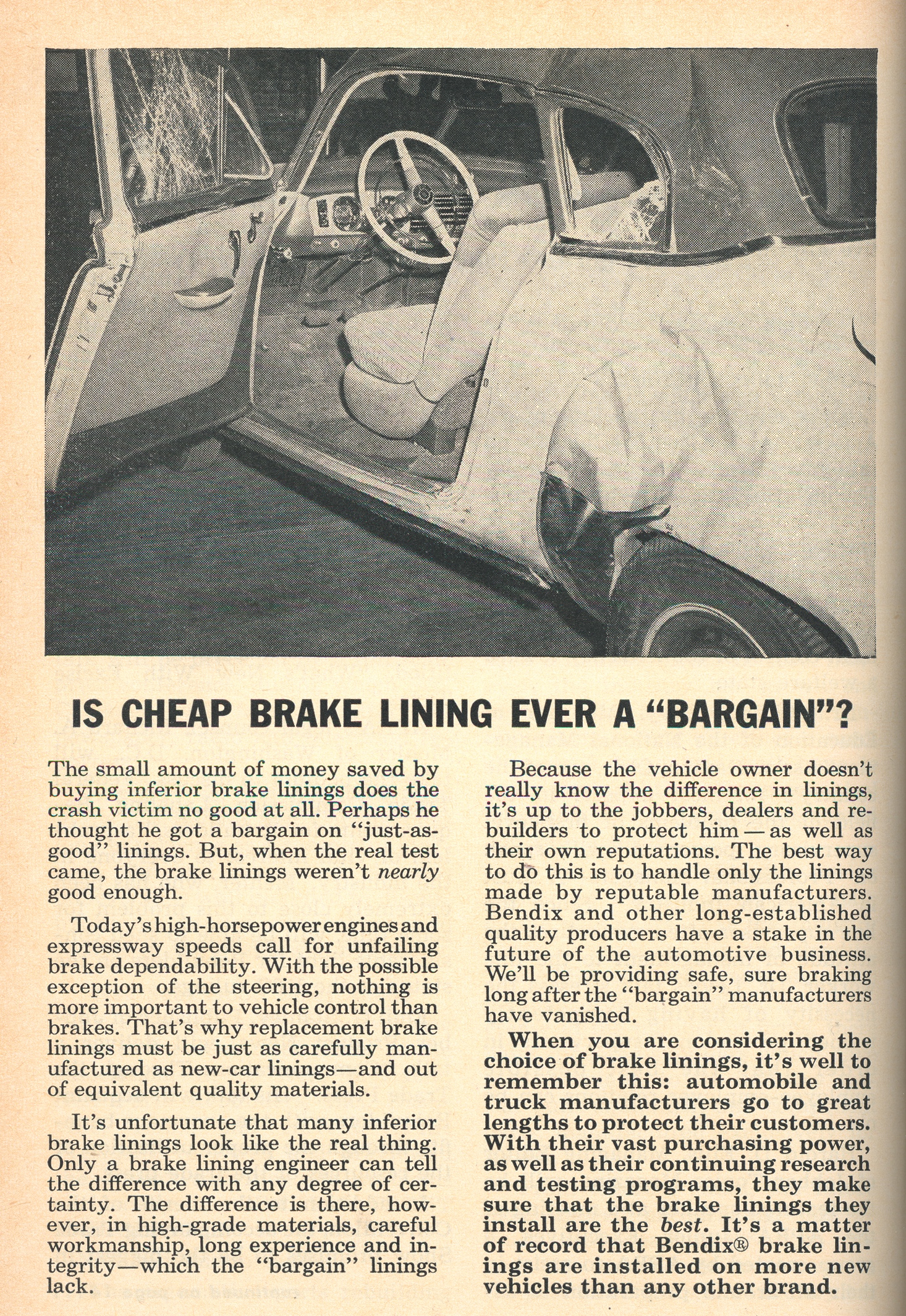
This 1950s advertisement for Bendix brake linings does not even look like an ad. No logo, tag line, not even a phone number. Just a grim accident photo and simple question that sparks the curiosity of the technician and the morbid imagination of the general public. It looks like a 1952 Chevrolet Coupe.
Around the time this ad was printed, the brake industry was at a crossroads. In the post-war boom, cars significantly increased their horsepower and weight in a very short time. But, how brakes and friction materials were serviced had not changed.
In those days, shops could still buy a roll of friction material or a very generic friction set. As long as the could rivit the friction material to the shoes, some would do it the same way they had done it since before WWII.
But, this was about to change. Bendix saw an opportunity to change the way brakes were serviced. During WWII, new adhesives were developed that could hold friction materials to a shoe without rivits. But, the adhesives could be tricky to manage at a shop level.
Enter the “bonders.” These local businesses would sell you a new set of brake shoes ready to go on the vehicle. All you had to do is give them back the worn shoes so the could recycle them. It was a “Win-Win” for the shops. No more rivits and the brake shoe sets from most bonders were superior to anything they could do in house.